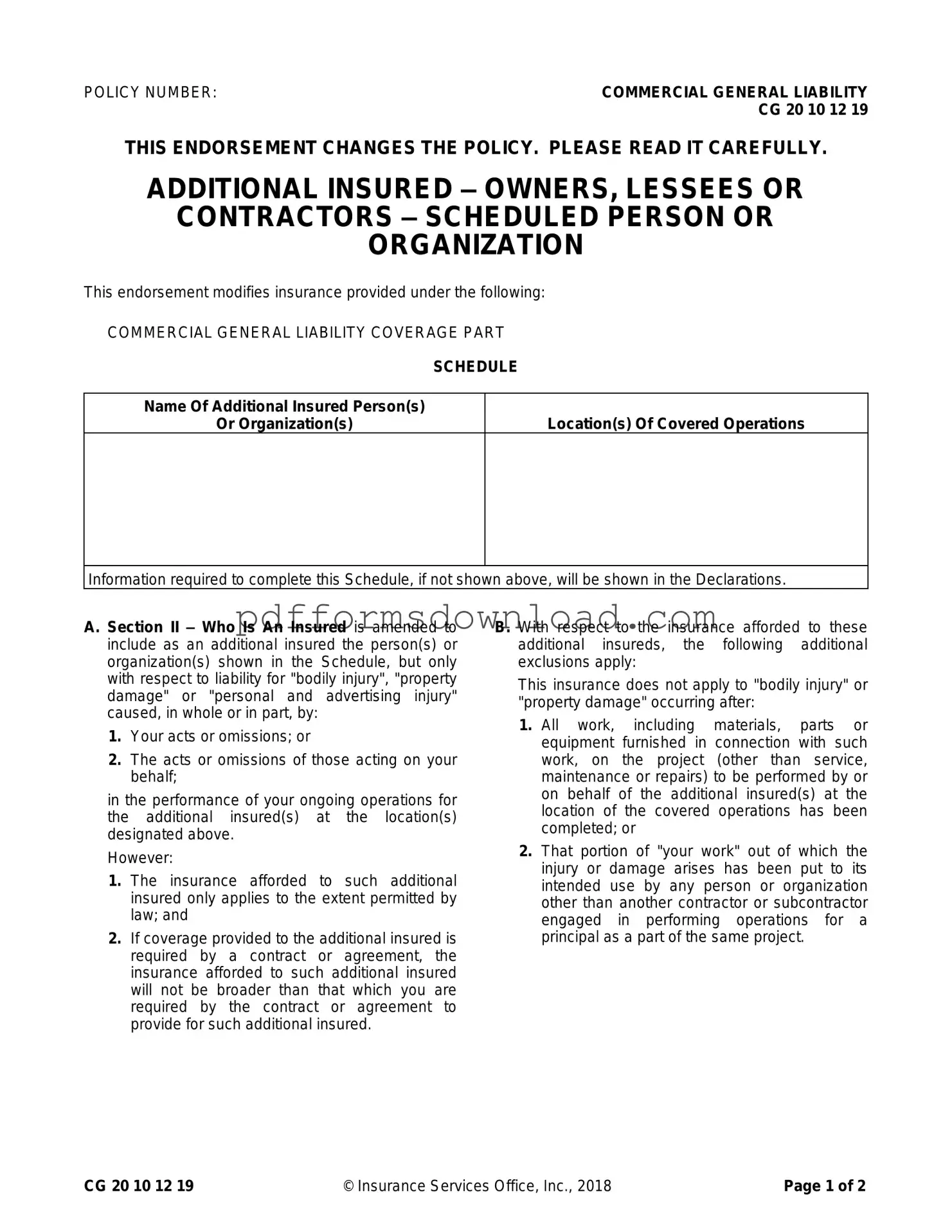What is the purpose of the CG 20 10 07 04 Liability Endorsement form?
The CG 20 10 07 04 Liability Endorsement form serves to add specific individuals or organizations as additional insureds under a Commercial General Liability policy. This is particularly important for contractors, as it helps protect them from liability claims that may arise during their operations for the additional insureds. By including this endorsement, the policy ensures that both the contractor and the additional insureds have coverage for certain liabilities related to bodily injury, property damage, or personal and advertising injury.
Who qualifies as an additional insured under this endorsement?
Individuals or organizations listed in the endorsement's schedule qualify as additional insureds. They are covered only for liabilities resulting from the contractor's actions or omissions while performing work for them. It's crucial to note that this coverage is limited to the locations and operations specified in the endorsement, ensuring that it is relevant to the specific project or contract.
What limitations exist regarding the coverage for additional insureds?
Coverage for additional insureds is subject to certain limitations. For instance, the endorsement does not apply to bodily injury or property damage occurring after the contractor has completed all work on the project, except for ongoing maintenance or repairs. Additionally, if the work has been put to its intended use by someone other than a contractor involved in the same project, the coverage may not apply. This means that the timing and context of the work are critical factors in determining coverage.
How does this endorsement affect the limits of insurance?
The endorsement specifies that it does not increase the overall limits of insurance provided by the policy. If coverage for an additional insured is required by a contract, the maximum amount payable will be the lesser of the limit specified in the contract or the applicable limits of the insurance policy. This ensures that the coverage remains within the bounds of the original policy limits while fulfilling contractual obligations.
Are there any additional exclusions for additional insureds?
Yes, the endorsement includes specific exclusions for additional insureds. For example, it does not cover bodily injury or property damage that occurs after the completion of the contractor's work. This means that any claims arising after the project has been finished may not be covered under this endorsement, emphasizing the importance of timing in liability claims.
What should be included in the schedule section of the endorsement?
The schedule section should list the names of the additional insured persons or organizations, as well as the locations of the covered operations. This information is crucial for determining who is covered and under what circumstances. If any required information is not provided in the schedule, it will be included in the policy's declarations, ensuring clarity and compliance with the endorsement's terms.
Can the coverage for additional insureds be broader than what is required by contract?
No, the coverage afforded to additional insureds cannot be broader than what is stipulated in the contract or agreement. This means that if a contract specifies certain limits or types of coverage, the endorsement will align with those requirements. This provision helps maintain consistency between contractual obligations and insurance coverage, preventing any misunderstandings about the extent of protection provided.
